People of Romney Marsh
![]() Richard Harris Barham
Richard Harris Barham
Author of The Ingoldsby Legends
![]() Napoleon Bonaparte
Napoleon Bonaparte
French Military Leader and Emperor
![]() Margaret Ethel Bray
Margaret Ethel Bray
Commissioned the building of
Romney Bay House in Littlestone
![]() Rev Charles Cobb
Rev Charles Cobb
Awarded the Albert Medal of the First Class for sea rescue
![]() Noel Coward
Noel Coward
Playwright, Composer, Actor
& Singer
![]() Rev John Deffray
Rev John Deffray
Rector St Clement from 1690
![]() Major M.Teichman Derville
Major M.Teichman Derville
Local dignitary and author![]() Thomas Edgar
Thomas Edgar
Master on HMS Discovery
Business Man, Mayor of Lydd
Impressionist Painter
Author
Actress
Film Director, Artist, Gardener
& Author
Awarded VC in WW2
Actor
Soldier
![]() Paul Nash
Paul Nash
Artist
![]() Edith Nesbit
Edith Nesbit
Author
![]() John Noel
John Noel
Mountaineer and Filmmaker
![]() John Piper
John Piper
Artist
![]() William Pitt the Younger
William Pitt the Younger
Prime Minister
![]() Anne Roper
Anne Roper
Author
![]() Milton Rosmer
Milton Rosmer
Actor, Film Director & Screenwriter
![]() Doctor Syn
Doctor Syn
Fictional Vicar & Smuggler
![]() Russell Thorndike
Russell Thorndike
Author
![]() James Tredwell
James Tredwell
English Cricketer
![]() John Tredwell
John Tredwell
Footballer
![]() Henry Tubbs
Henry Tubbs
Surveyer & Developer of LIttlestone
![]() General William Twiss
General William Twiss
Soldier, Royal Engineers
![]() Peter Walter
Peter Walter
Actor & DSO in WW2
![]() William Waylett
William Waylett
Surgeon and Man Midwife

In January 1867, the French lugger Courier de Dieppe was spotted foundering in a gale off Dymchurch, with the crew clinging to the rigging and one by one dropping off into the sea. After repeated attempts, a line was thrown to the boat, but by this time there was only one of its crew left.
The Reverend Charles Cobb, the rector of the Dymchurch parish, volunteered to swim to the boat in an attempt to save the last man. Encouraged on by his wife and the gathered crowd, he dived into the troubled waters and swam the 50 or more feet to the vessel. He was then joined by a local coastguard, John Batist. Together they reached the trapped man and managed to carry and drag him back to shore where they received much applause for their heroism.
The rescued man was the only survivor of a crew of four from the ship. Cobb was awarded the Albert Medal of the First Class and Batist was awarded the Albert Medal of the Second Class. The street nearest to where this heroic action occurred was later named "Charles Cobb Close" in his memory.

Edwin Finn, Chairman of Messrs. Edwin Finn and Sons, Limited, Brewers in Lydd, was born in 1834. Edwin Finn was a prominent personality, not only in connection with the brewing trade but as public man. An original Member of the Institute of Brewing, he had always taken a prominent part in trade defence matters, and had held the office of Chairman of the Kent Brewers' Union since February 20th, 1913. He had for very many years represented that union as its delegate on the General Committee of the Brewers Society, and in 1916 that Committee honoured him by making him an elected member.
The public offices held by Mr. Finn were numerous and important. For six years he was High Bailiff of Lydd, when the old Corporation was limb of New Romney, one of the Cinque Ports. On Lydd's being
granted charter under the Municipal Acts in 1885 Mr. Finn was elected the first Mayor of the borough, and ho was re-elected to the office on no fewer than twenty-seven subsequent occasions, having at the time of his death occupied it for 24 years in succession. He was the oldest mayor in England.
He was Justice of the Peace for the County of Kent, and an Alderman and Magistrate for the Borough of Lydd. Amongst other offices he was Lord of Romney Marsh, Chairman of the Commissioners of Walland and Denge Marshes. He had been churchwarden at Lydd for over 45 years, was Commissioner of Taxes, and acted as trustee to many charities. Mr. Finn had the honour of attending Queen Victoria's Jubilee
ceremonies in 1887 and 1897, and was present and became Baron of the Cinque Ports at the Coronation of King Edward VII, on which occasion he was one of the canopy bearers in Westminster Abbey. He
had the honour also of attending at the Coronation of King George V, at which the Barons drooped the colours on the arrival of His Majesty at Westminster.
Edwin Finn died in October 1917 aged 82.
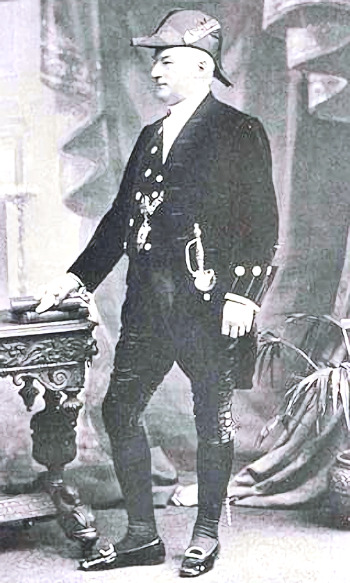
Edwin Finn

Victoria Hopper was a Canadian-born British stage and film actress and singer, who in her latter years, lived in St Mary in the Marsh.
She was born 24 May 1909 in Vancouver in Canada and died peacefully at her home in St Mary in the Marsh on 22 January 2007, aged 97.
Her second marriage, in 1951, was to Peter Walter, a fellow actor and hero of the second world war. They had met starring in the play My Mother Said in June 1949. They lived together at Well Cottage in St. Mary in the Marsh.
Victoria Hopper, well known from the 1930s for her achievements on stage and screen, was described as 'petite and fair-haired'. She was a great success in her first play 'Martine', in which she starred. Victoria went on to star in several plays, musical shows and in seven films.
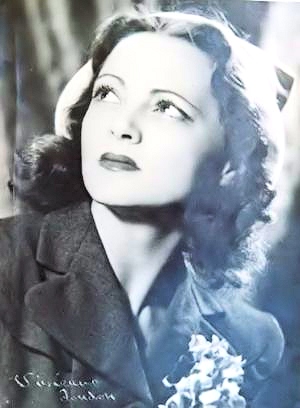
Victoria Hopper

Lawrence "Larry" Martyn, born on 22 March 1934, was an English actor known for his comedy performances. He spent his latter years living in St Mary's Bay.
Martyn was born in London and was a former member of the Parachute Regiment. He was probably best known for his role as Mr. Mash in the BBC comedy series Are You Being Served?, appearing in the first three series. Other TV appearances included Dad's Army, On the Buses, Look - Mike Yarwood!, Rising Damp and The Detectives.
He also played alongside Frankie Howerd in two of his BBC shows, Up Pompeii! and Whoops Baghdad. His film roles included Carry On at Your Convenience where he had a small part as the pier rifle-range owner, and Carry On Behind, where he played an inept electrician who helps wire up the public address system at the campsite the film was set in.
Larry Martyn died on 7 August 1994 at home in St Mary's Bay and was survived by his wife Hilary and their two daughters.
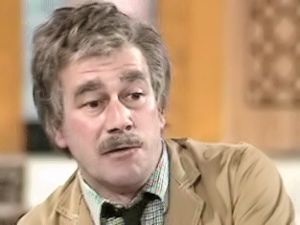
Larry Martyn

Lieutenant-General Sir John Moore, KB, was a British soldier and General, also known as Moore of Corunna. He is best known for his military training reforms and the building of the Dymchurch Redoubt, the Martello Towers and the Royal Military Canal.
John Moore was born in Glasgow in 1761 and joined the British Army in 1776 as an ensign in the 51st Regiment of Foot. In 1803 to commanded a brigade at Shorncliffe Army Camp near Folkestone, where he established the innovative training regime that produced Britain's first permanent light infantry regiments.
When it became clear that Napoleon was planning an invasion of Britain, Moore was put in charge of the defence of the coast from Dover to Dungeness. It was on his initiative that the Martello Towers were constructed following a pattern he had been impressed with in Corsica, where the prototype tower, at Mortella Point, had offered a stout resistance to British land and sea forces.
He also initiated the cutting of the Royal Military Canal and recruited about 340,000 volunteers to a militia that would have defended the lines of the South Downs if an invading force had broken through the regular army defences.
In 1804 Moore was knighted and promoted to Lieutenant-General. In 1806 he returned to active duty in the Mediterranean and then in 1808 in the Baltic. He died in 1809 at the Battle of Corunna, in which he defeated a French army under Marshal Soult during the Peninsular War.
![]() reference and more information
reference and more information
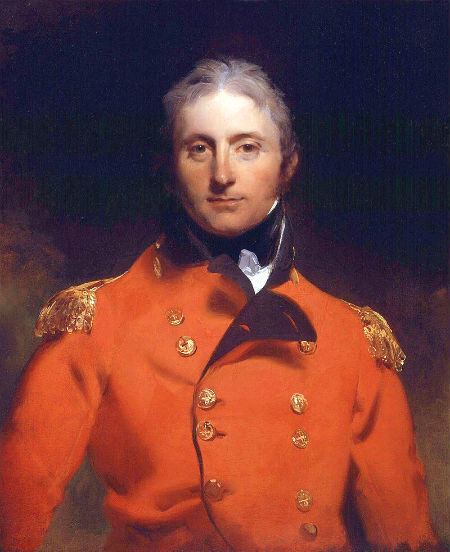
Sir John Moore by Sir Thomas Lawrence

John Baptist Lucius Noel (26 February 1890 – 12 March 1989) was an English mountaineer and filmmaker best known for his film of the 1924 Mount Everest expedition, The Epic of Everest. Later in his life, he lived in Harriett Cottage in Brenzett, where he died in 1989 aged 99.
John Noel's father, Col. Edward Noel, was the younger son of Charles Noel, 2nd Earl of Gainsborough. Born in Newton Abbot, Devon, England, Noel was educated in Switzerland, where he fell in love with the mountains, and at the Royal Military Academy Sandhurst. He was baptised Baptist Lucius and added the name John by deed poll in 1908. He was commissioned into the East Yorkshire Regiment in 1909 and posted to India.
After the first ascent of Everest in 1953, Noel lectured once again about the mountain and his footage and photographs appeared widely in many films and television programmes. He was also the author of two early books on handgun marksmanship.
In his later years, Noel restored old houses. He had one daughter, Sandra. He died on 12 March 1989 (aged 99).
![]() reference and more information
reference and more information
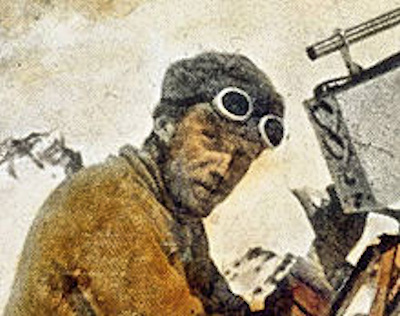
John Noel on Everest

John Piper (1903 – 1992) was an English painter, printmaker and designer of stained-glass windows and theatre sets. His work often focused on the British landscape, especially churches and monuments.
John Piper was incredibly productive and made hundreds, maybe thousands, of pictures using a myriad of techniques which have since become the staple of art teachers everywhere.
John Piper was a topographical artist, he recorded architecture, churches, stately homes and ancient ruins.
During the Second World War he was commissioned to paint the damage caused to ancient and spiritual places like Coventry Cathedral . He worked at various sites throughout the British Isles. His work has a deeply Romantic edge to it.
One of his favourite places to visit was Romney Marsh where he recorded, in his own particular way, the churches of the Marsh and also the Military Canal. You can buy a nice set of the cards showing some of the pictures at the Romney Marsh Visitor Centre.
![]() reference and more information
reference and more information
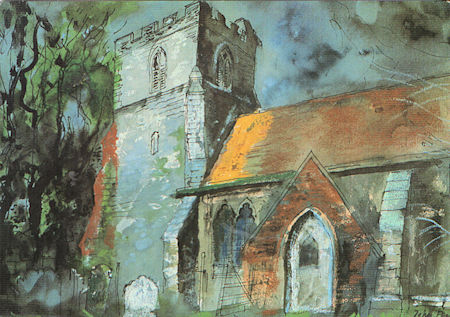
Painting by John Piper of St Dunstan Church in Snargate

Pitt the Younger was British prime minister during the French Revolutionary and Napoleonic wars and helped to define and strengthen the office of the prime minister. He was the main promotor of the Martello Towers and the Royal Military Canal on Romney Marsh.
William Pitt was born on 28 May 1759 in Kent, the son of the earl of Chatham (William Pitt the Elder), himself a famous statesman. In 1782, he became chancellor of the exchequer. The following years were marked by the battle between George III and the radical Charles Fox. Matters deteriorated when Fox forged an alliance with the previously loyal Lord North. The two men defeated the government and George was forced to ask them to take control. Fox became Pitt's lifelong political rival.
In December 1783, George III dismissed their coalition and asked Pitt to form a government. He was, at 24, the youngest man to become prime minister. He was immediately defeated in parliament but refused to resign. George III was prepared to abdicate rather than let Fox in again. In 1784, parliament was dissolved for a general election, which Pitt won. His government worked to restore public finances, severely strained by the cost of the American War of Indepence and later by war with France. Pitt imposed new taxes - including Britain's first income tax - and reduced both smuggling and frauds. He also simplified customs and excise duties.
In 1798, there was a rebellion in Ireland, influenced by the ideas of the French Revolution. Pitt had long felt that union of the two countries was necessary and brought in an Act of Union which came into effect in January 1801. Yet fierce royal opposition to his attempt to abolish restrictions on Catholicism in Ireland forced his resignation in 1801.
Three years later, with Napoleon threatening invasion, the king was forced to ask Pitt to form a government and he became prime minister again in May 1804. Thanks to Pitt's efforts, Britain joined the Third Coalition against France (made up of Austria, Russia and Sweden) and in 1805 the British inflicted a serious defeat on the French navy at the Battle of Trafalgar. However the Coalition collapsed and this imposed a severe strain on Pitt's already weakened health. He died on 23 January 1806 and was buried in Westminster Abbey.
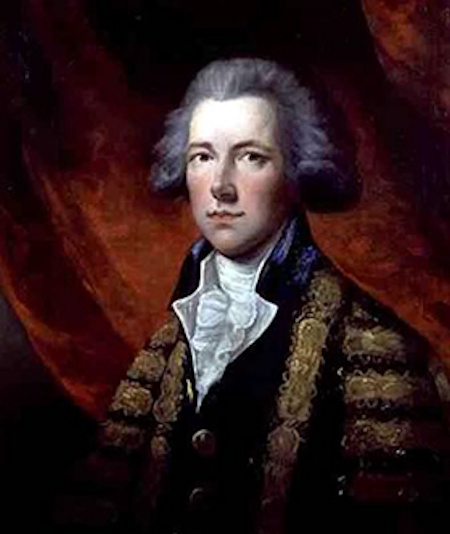
William Pitt the Younger by Thomas Gainsborough

Anne Roper was an author and historian who lived at Littlestone on Sea, at the Red House and, from 1968, Flag Cottage. Her most famous work is ‘The Gift of the Sea', which is an official guide to Romney Marsh.
Born in Liverpool, Anne Roper claimed descent from Sir Thomas More through his daughter Margaret Roper of Canterbury and came to Kent from Cardiff in the 1920s to convalesce when a hockey accident forced her to abandon her university studies. After discovering the New Romney Archives, Anne became immersed in the history of the town and subsequently that of the whole of Kent.
Prominent in public life, Anne was vice president of Romney Marsh Historic Churches Trust; Hon Archivist to Hythe Corporation; a governor of Southlands School, New Romney; a trustee of Southlands Charity; Lord of the Manor of Eastbridge (one of Romney Marsh's 23 manors); Group Secretary of the East Kent Federation of Women's Institutes; and the first woman president of the Association of Men of Kent and Kentish Men.
In WW2 Anne was Army Welfare Officer for troops stationed on Romney Marsh and the area's district representative for the Women's Land Army. Her duties included arranging entertainments by ‘ENSA' (The Entertainments National Service Association), giving hundreds of lectures, and recruiting and billeting ‘land girls'. She was appointed OBE for her war work.
Anne died in 1988 at the age of 85.
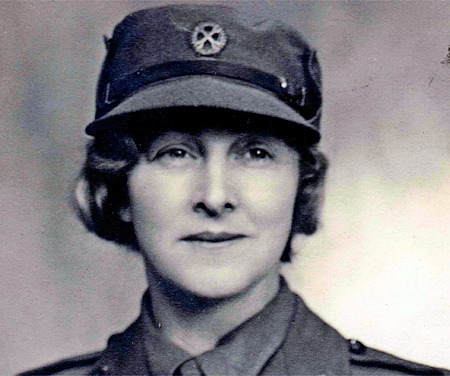
Anne Roper

Milton Rosmer was a British actor, film director and screenwriter. He was born in Southport, Lancashire in 1881.
Rosmer owned and lived in Old Tree Cottage, a Grade II listed 18th century cottage in Mill Road in Dymchurch, between the 1920s and 1950s, He befriended Russell Thorndike, author od the Dr Syn novels, and produced his film, Dr. Syn, in 1937.
Miton Rosmer made his name on the British stage, debuting in 1889. He easily made the transition to silent pictures, appearing in such films as The Passionate Friends (1922). Talkies proved to be no obstacle to him, as it did to many silent actors, and Rosmer had roles in such classics as Goodbye, Mr. Chips (1939) and The Stars Look Down (1940). His screen debut in The Mystery of a Hansom Cab and continued to act in film and television until 1956. He specialized in playing such characters as magistrates, professors, army officers and other authority figures.
Rosmer was also a screenwriter and director. The Crimean War epic Balaclava (1928), which had been shot as a silent by Maurice Elvey, was extensively reshot by Rosmer as a talkie. Some of his productions were Lady Windermere’s Fan (1916), Little Women (1917), Wuthering Heights (1920) and Goodbye Mr. Chips (1939).
He died in 1971 in Chesham.
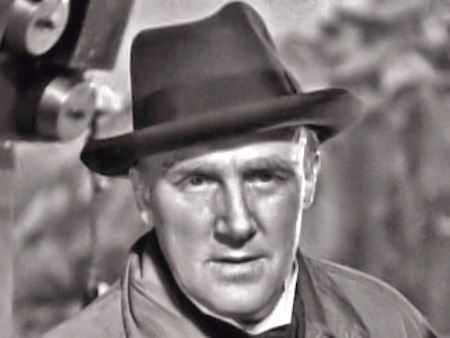
Milton Rosmer in The Phantom Light in 1935

Father and son John and James Tredwell are both sportsman with strong links to St Mary's Bay.
St Mary's Bay resident John Tredwell was the Sports Organiser at the St Mary's Bay School Journey (and Holiday) Centre in the 1960s. The centre was used by schools and organisations to provide educational and sporting breaks for children.
Below is an article with photograph about John Tredwell, taken from the Centre's journal of winter 1968.
John originates from Ashford, but moved to Folkestone in his 20s, as he played for Folkestone Town Football Club, he was a very good footballer in his youth. He now lives in St Mary's Bay.
John's son James Tredwell, who lived in St Mary's Bay, was a Kent and English cricketer. A left-handed batsman and a right-arm off break bowler, he played his domestic cricket for Kent County Cricket Club. He made his debut for Kent in the 2001 season, just nine days before his first appearance for England Under-19s. He made his ODI debut on England's tour of Bangladesh in March 2010 and his Test match debut in the second test against Bangladesh at Dhaka on 20 March 2010. He was appointed county captain of Kent in November 2012.
In 2013 he played many games for England, culminating in him being made captain of the England T20 side for their match against New Zealand on 27 June 2013. Unfortunately, the match had to be abandoned after only 2 overs because of rain.
James retired from first-class cricket in 2018. He no longer lives in St Mary's Bay but now resides near Canterbury, with his wife and child, close to Canterbury Cricket Ground.
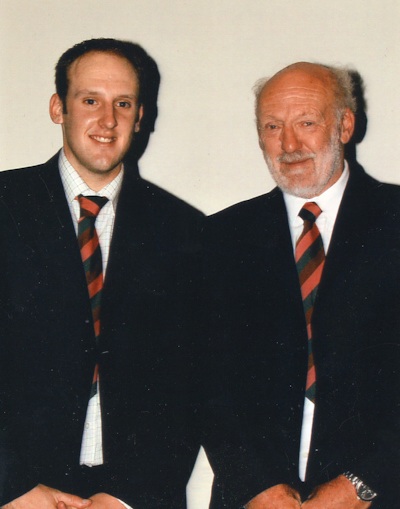
John and James Tredwell in October 2006 at the
150th Anniversary Dinner/Dance of Folkestone CC (ack15)

General William Twiss (1745 – 14 March 1827), was a British Army Royal Engineer, responsible for the design of many military defences.
Probably born in Kent in 1744 or 1755, Twiss worked in the ordnance office at the Tower of London from 1760, before becoming overseer of works at Gibraltar. Receiving a commission in the army in 1763. Returning to England, he commenced work on the defences at Portsmouth Dockyard, before accompanying General Sir John Burgoyne's army to Canada in 1776, where he was responsible for a number of defensive programmes.
He returned to England in 1783. Over the following years, Twiss oversaw the construction of various defences, including the chain of Martello Towers along the Kent and Sussex coastline. Twiss also accompanied the army on expeditions to the Netherlands, the Channel Islands and Ireland. Twiss was made Major General in 1805, and in 1809 became colonel-commandant of Royal Engineers Corps. 1825 saw him made full general.
He died 14 March 1827, aged 82, and is buried in the church of All Saints, Bingley. He is commemorated in the naming of Twiss Road in Hythe, Kent.
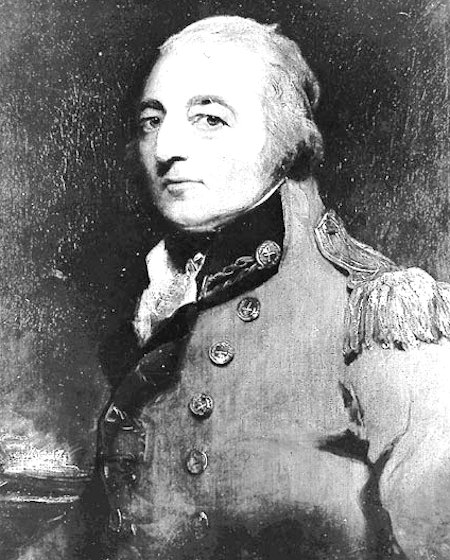
General William Twiss

Peter Walter was born in Hythe, on 11 March 1915, and educated at the Harvey Grammar School in Folkestone.
Always interested in dramatics, on leaving school he joined the local repertory company, of which he eventually become director.
During the second world war he served first in the Pioneer Corps and was then commissioned into the 23rd Hussars. Whilst serving in France, he was awarded the DSO for gallantry when his squadron was attacked by German Panther tanks.
Read full Citation
After the war he married Victoria Hopper, a well known actress, and they settled in St Mary in the Marsh, living at Well Cottage in St. Mary's Road. He died in 1993, aged 78.
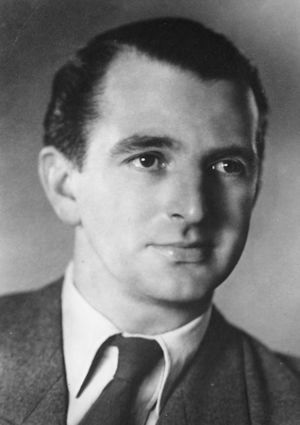
Peter Walter, Actor and War Hero

William Waylett was a "Man Midwife" from 1757 to 1815. He began delivering babies in Lydd and on the surrounding Romney Marsh at the age of 29; his last delivery, being a female child, to Mrs. Godfrey Lepper, her 5th child, on January 29th 1815.
He died a bachelor and was buried in the chancel of Lydd church on October 25th 1815.
He kept a detailed diary of his deliveries in the back of a Pharmacopoeia (prescription book) written by his grandfather, another William Waylett, of Rye. The diary tells us the name of each mother, and often the father's christian name; the sex of the child; nature of the mother's confinement, whether quick, laborious etc.; where the birth took place, e.g. Lydd, Brookland, Dymchurch, etc.; other medical information and whether his fee was paid or not. According to Seymour's Survey of Kent, 1776, Waylett was said to be "a Gentleman of great skill and judgement in Surgery and Pharmacy", so by the age of 39 he was already famous. The book was handed down to Waylett's great niece Mary Sargent who married James Buss of Lydd.
Dr. F. William Cock, M.D., F.S.A., purchased the diary from Miss Julia Buss of New Romney in 1904. He lectured about the famous William Waylett, the address being illustrated by lantern slides, apothecaries' advertisements, 18th century documents connected with Waylett and apothecaries' visiting cards. The diary is now housed at the Library of the Wellcome Institute for the History of Medicine, Euston Road, London.



